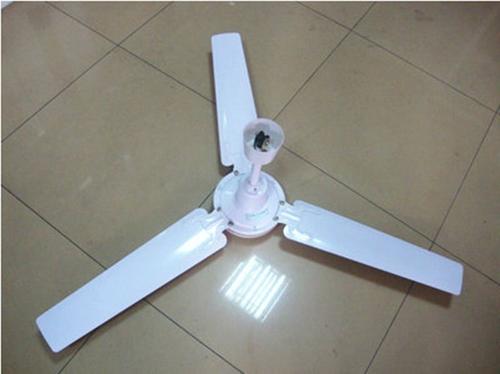What are the installation requirements for Jiangmen ceiling fans
1. Equipment requirements for fans
① The height of the equipment should be appropriate, generally with the fan blades 2.5-3m above the ground and 400-500mm from the ceiling. Being too close to the ground can easily harm people, while being too close to the ceiling can affect the airflow behind the blades and decrease the airflow.
② The hook should be sturdy, and the diameter of the OPA2132PA ceiling fan hook should not be less than the diameter of the ceiling fan suspension pin, and should not be less than 8mm.
③ When assembling ceiling fans, the following requirements should be met:
a. It is strictly prohibited to change the angle of the fan blades;
b. The fixing screws of the fan blades should be equipped with anti loosening devices;
c. The engagement length of threads between the suspension rods and between the suspension rods and the fan head (motor) shall not be less than 20mm at each end, and anti loosening equipment shall be installed.
④ The wiring is correct, and the fan blades should not have significant shaking during operation.
⑤ Due to the fact that the ceiling fan equipment is located at a high altitude and is generally not touched by the human body, its metal shell is not allowed to be grounded for maintenance (zero connection). The switch (speed controller and switch) of the ceiling fan should be connected to the phase circuit, and power should be cut off for cleaning or maintenance.

2. Equipment for lifting hooks
(1) The equipment for hoisting hooks on cast-in-place concrete structures and on cast-in-place concrete floors or beams should be carried out in cooperation with civil construction. The hook embedded in this method is very sturdy, and the pre embedding of the hook in the cast-in-place beam or floor slab is shown in Figure 10-13. The hook is made of steel bars with a diameter of 8~10mm.
(2) The equipment for hanging hooks on porous prefabricated panels first drills holes on the prefabricated panels. The hole needs to be drilled in the direction where the prefabricated board has holes, and then the equipment hook should be lifted according to the following method.
① Take a piece of iron plate with a length of 150-200mm, a thickness of 8-10mm, and a width of approximately (3/5) d (d is the diameter of the hole in the multi L prefabricated plate), and use a tap to tap an M8 or Ml0 threaded hole in the center of the iron plate (which should match the diameter of the hook).
② Drill a slot slightly longer than the width of the iron plate in the porous prefabricated board with holes.
③ Insert the iron plate sideways into the hole of the prefabricated board through the slot, slightly adjust the orientation, and adjust the iron plate screw L to the position where the hook can rotate in.
④ Rotate the nut, spring washer, and flat washer onto the hook in sequence. Insert the hook into the iron plate screw hole in the porous prefabricated plate hole, and tighten the nut,.
3. Wiring of ceiling fans
The wiring of the ceiling fan is shown in Figure 10-15. If the ceiling fan is newly purchased, simply strictly follow the wiring diagram in the user manual for wiring. The colors of each outlet wire are red, yellow, white or red, green, black, etc. The color of the outlet wire may be different for ceiling fans with different trademarks. Even for ceiling fans with the same trademark, the color of the outlet wire may be different.
If the instruction manual is lost or cannot determine the function of each end wire based on the color of the lead wire, it is necessary to first identify which is the working winding and which is the starting winding, that is, acknowledge the orientation of the "1" and "2" ends in Figure 10-15 (a), and then wire according to Figure 10-15 (b). A multimeter can be used to test the difference between the working winding and the starting winding.
Article source: Jiangmen ceiling fan http://www.gd-dx.cn
-
04-11
Three leaf ceiling fan manufacturer: reasons why the electric fan does not rotate
1. The first thing that comes to mind is that the motor lubrication is not good, and the shaft part needs to be lubricated with oil. I had this situation yesterday, where the electric fan blades were
-
12-03
What are the precautions for maintenance and upkeep of a large ceiling fan?
What are the precautions for maintenance and upkeep of a large ceiling fan?1、 Repair and maintenance of circuits:1. Check whether the mechanical switch action of the regulating valve is reliable and f
-
11-10
The advantages of large industrial ceiling fans
The advantages of large industrial ceiling fansIn the scorching summer, in large industrial plants, the temperature is high and there is poor ventilation, resulting in poor heat dissipation. Working i
-
12-10
What are the reasons why the ceiling fan doesn't turn?
Ceiling fan trust is still a type of electric fan that many households use today. Due to the fact that compared to our floor fans and even our seat fans, ceiling fans not only have a larger area of pr
